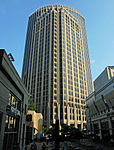Charlotte metropolitan area

The Charlotte metropolitan area, sometimes referred to as Metrolina, is a metropolitan area of the U.S. states of North and South Carolina, within and surrounding the city of Charlotte. The metropolitan area also includes the cities of Gastonia, Concord, Huntersville, and Rock Hill as well as the large suburban area in the counties surrounding Mecklenburg County, which is at the center of the metro area. Located in the Piedmont, it is the largest metropolitan area in the Carolinas, and the fourth largest in the Southeastern United States. The Charlotte metropolitan area is one of the fastest growing metropolitan areas in the United States.There are two official metropolitan boundaries for the Charlotte metropolitan area: the Charlotte-Concord-Gastonia Metropolitan Statistical Area (MSA) and the Charlotte-Concord Combined Statistical Area (CSA). The two regions are identical except for the addition of two micropolitan areas, Shelby and Albemarle to the Charlotte-Concord CSA that are not included in the Charlotte-Concord-Gastonia MSA. The population of the MSA was 2,595,027 and the population of the CSA was 2,754,842 as of 2020 Census. The metropolitan area is slightly larger than 3,000 square miles (7,800 km2). The Charlotte metro area is a major financial center, transportation hub, and entertainment destination. Charlotte is the second largest financial hub in the United States behind New York City, being the headquarters for Bank of America and Truist Financial as well as housing the East Coast headquarters and largest employment hub of Wells Fargo. Other Fortune 500 companies headquartered in the metro area include Brighthouse Financial, Duke Energy, Honeywell, Lowe's, and Nucor. The Charlotte metro area is the largest manufacturing region in the Carolinas. The estimated gross metropolitan product (GMP) of the metro area is over $170 billion. Located in Mecklenburg County, Charlotte Douglas International Airport is the sixth-largest airport in the world by aircraft movements and the city's location at the junction of I-85 and I-77 makes it a highway logistics center. The Charlotte metro is also the center of American auto racing and is home to the Carolina Panthers, Charlotte Hornets, and Charlotte FC. The Charlotte metro is home to a number of prominent higher education institutions, including the University of North Carolina at Charlotte, Queens University of Charlotte, Davidson College, Belmont Abbey College, and many more. The primary community college for the area is Central Piedmont Community College, which has several campuses throughout Charlotte and the surrounding region.
Excerpt from the Wikipedia article Charlotte metropolitan area (License: CC BY-SA 3.0, Authors, Images).Charlotte metropolitan area
West 7th Street, Charlotte Uptown
Geographical coordinates (GPS) Address Nearby Places Show on map
Geographical coordinates (GPS)
| Latitude | Longitude |
|---|---|
| N 35.23 ° | E -80.84 ° |
Address
St. Peter's Episcopal Church
West 7th Street
28202 Charlotte, Uptown
North Carolina, United States
Open on Google Maps










